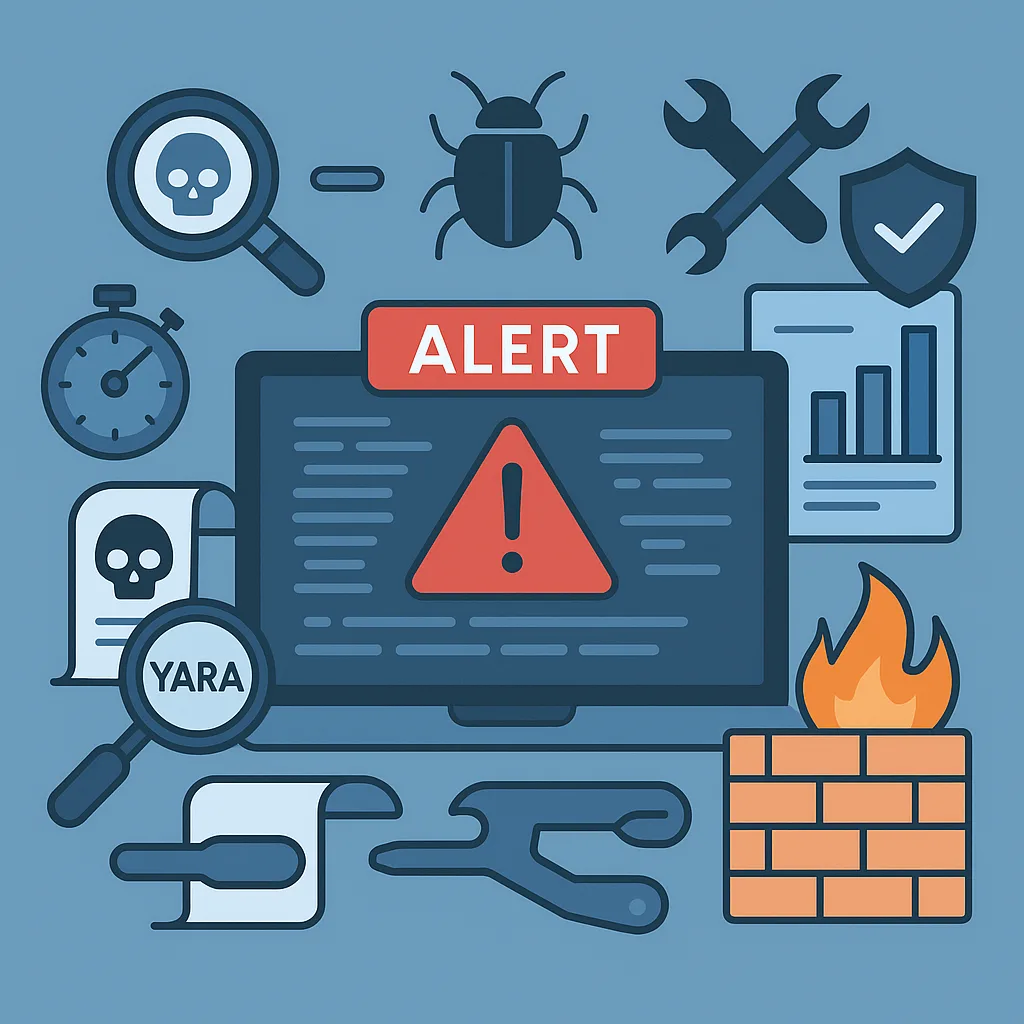When a cyber incident strikes, time is everything. Whether you’re responding to ransomware, privilege escalation, or a data breach, the first minutes and hours can define the impact. But many teams lack enterprise-grade IR platforms—or need tools they can deploy fast and without licensing hurdles.
That’s where open-source incident response tools come in. In this guide, we’ll explore how to set up a lean but powerful IR workflow using freely available tools—from detection and triage to containment and investigation.
Why Use Open-Source for Incident Response?
- No license costs
- Rapid deployment in crisis moments
- Transparent source code for auditability
- Community support and extensibility
- Portable (many tools can run from USB or temporary VMs)
Whether you’re a small team or a SOC running on a tight budget, open-source IR tools provide real-world capability without vendor lock-in.
Core Steps in Quick Incident Response
- Detect suspicious behavior
- Triage affected systems
- Contain the threat
- Investigate what happened
- Remediate and recover
- Document and report
Now let’s map each of those to top open-source tools.
Step 1: Detection and Alerting
Use Cases:
- Unusual logins
- Anomalous process execution
- Network beaconing
Tools:
- Wazuh: Real-time threat detection from logs and endpoints
- Suricata: Network-based intrusion detection (IDS/IPS)
- Zeek: Protocol-level network monitoring and behavioral logging
- Sysmon + Winlogbeat: For collecting enriched Windows logs
These tools can be integrated into a centralized SIEM stack—or run standalone for fast triage.
Step 2: Triage and Scoping
Goals:
- Identify affected systems
- Determine root cause and entry point
- Prioritize based on business impact
Tools:
- KAPE (Kroll Artifact Parser and Extractor): Rapid Windows forensic triage
- GRR Rapid Response: Remote system interrogation and data collection
- Velociraptor: Lightweight live forensics, query endpoints in real time
- Log2Timeline (Plaso): Build timelines from forensic artifacts
Use these tools to extract browser history, prefetch files, event logs, and USB history to understand the scope.
Step 3: Containment
Objectives:
- Stop attacker activity
- Isolate compromised systems
- Kill malicious processes
Tools:
- RemCom or PSExec: Remotely run kill commands or scripts
- RDP/SSH scripts: For quick isolation from networks
- Firewall automation scripts: Block IPs or drop packets from attacker ranges
Pro tip: Script and test your containment actions before you’re in a crisis.
Step 4: Investigation and Analysis
Tasks:
- Analyze dropped files or payloads
- Reverse engineer malware if needed
- Trace lateral movement and privilege abuse
Tools:
- Volatility / Rekall: Memory forensics from RAM images
- YARA: Pattern matching against known malware indicators
- Cuckoo Sandbox: Automated malware analysis in VMs
- CyberChef: All-purpose data parsing, decoding, and analysis
Step 5: Remediation and Recovery
Goals:
- Remove persistence
- Reset credentials
- Rebuild or restore affected systems
Tools:
- Ansible / PowerShell scripts: Automate cleanups and patching
- Open-source EDR clients: Sweep and verify endpoints are clean
- Backups: Always verify integrity before restore
Note: Monitor for re-infection attempts during and after remediation.
Step 6: Reporting and Documentation
Objectives:
- Track timeline of events
- Identify control failures
- Recommend prevention strategies
Tools:
- Timesketch: Timeline analysis and reporting
- Elastic/Kibana Dashboards: Visualize attack paths and indicators
- Markdown + Git repos: Document incident details and lessons learned
Creating a reusable report template speeds up future response cycles.
Quick Response Toolkit Setup
Here’s a sample “IR Jump Kit” using open-source tools:
| Category | Tool / Utility |
|---|---|
| Detection | Wazuh, Suricata, Zeek |
| Triage | Velociraptor, KAPE, GRR |
| Containment | PSExec, firewall scripts |
| Memory Analysis | Volatility |
| Log Analysis | Sysmon + ELK |
| Malware Handling | YARA, CyberChef, Cuckoo Sandbox |
| Documentation | Timesketch, Git markdown |
Host this kit in a read-only USB, isolated VM, or secure file share ready to deploy instantly.
Best Practices for Open-Source IR
- Test your toolkit in lab environments regularly
- Use signed and trusted binaries to prevent tampering
- Document how to run each tool with example cases
- Train your team on the toolkit before an incident
- Keep a printed runbook for offline access
Conclusion
Open-source tools empower teams to respond to security incidents faster, smarter, and more affordably. With the right toolkit and some preparation, even small IT teams can mount a professional-grade incident response—from detection to deep forensics—without waiting on expensive licenses or consultants.
The key is preparation: Build your response kit now, so when minutes matter, you’re ready.


